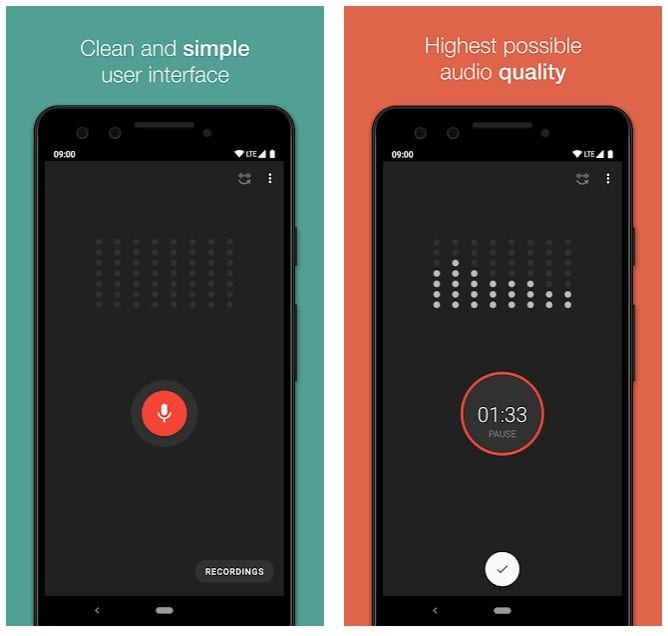

markAllPaused()- As the name suggests, it simply pauses all the audios in the list.For instance, if the seekBar is seeked to certain position, then the track is moved to that point accordingly and that’s what is done in this method. manageSeekBar()- It’s purpose is to move the track as per the progress of the seekBar.The list of method in the ViewHolder class is as follows:. Then, we imported a list of methods which are quite self explanatory but still I’ll try add something to it. In the above code, we just declared and initialized objects for the ui elements in the recording_item_layout.xml and some other variables which would be used later in this post.To do so, go to the values directory in the res directory and there you’ll find the styles.xml file. Hence, we need to change the AppTheme to get rid of the default action bar. If you have seen the output video of this project, then you must have noticed that this project does not use the default action bar.

#VOICE RECORDER APP IN BACKGROUND WITHOUT TOP BAR INDROID ANDROID#
So, download the zip of images from below, extract it and move all the images to the drawables directory in your android project without changing their names. Before proceeding to the coding part, we need certain images in the upcoming screens.MainActivity will be configured as the main recording screen.Now, as the files get loaded and the gradle is built, we’ll have activity_main.xml and MainActivity.java.Go ahead and create a new project by any name that you think is okay for this project.2.4 Understanding the flow in RecordingAdapter.2.2 Setting up the recording process ( The Java Part ).


 0 kommentar(er)
0 kommentar(er)
